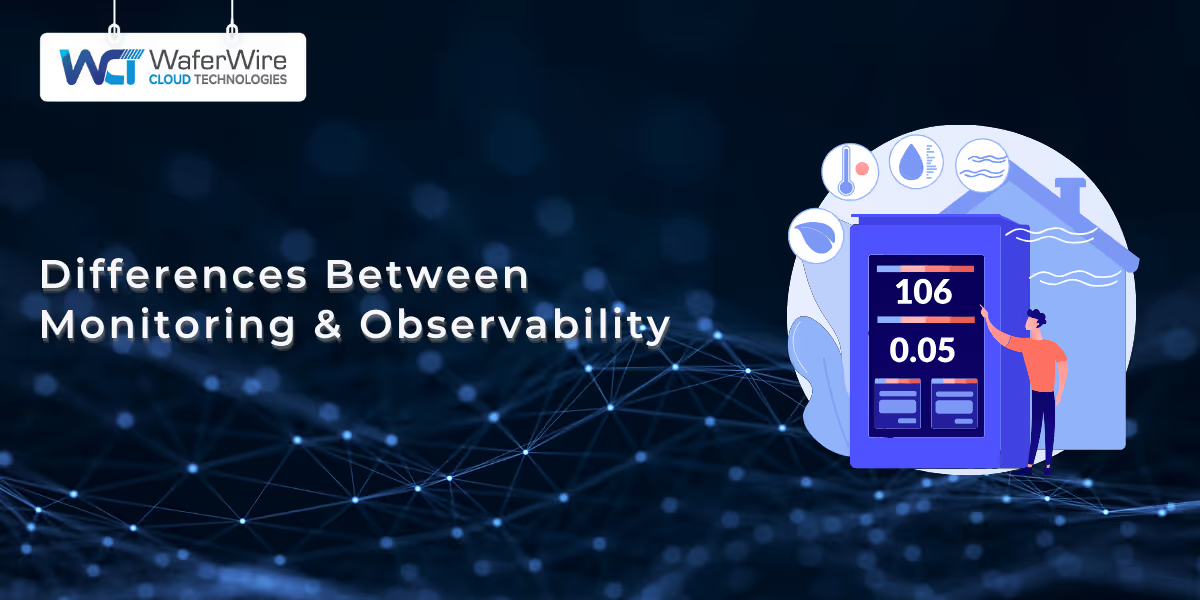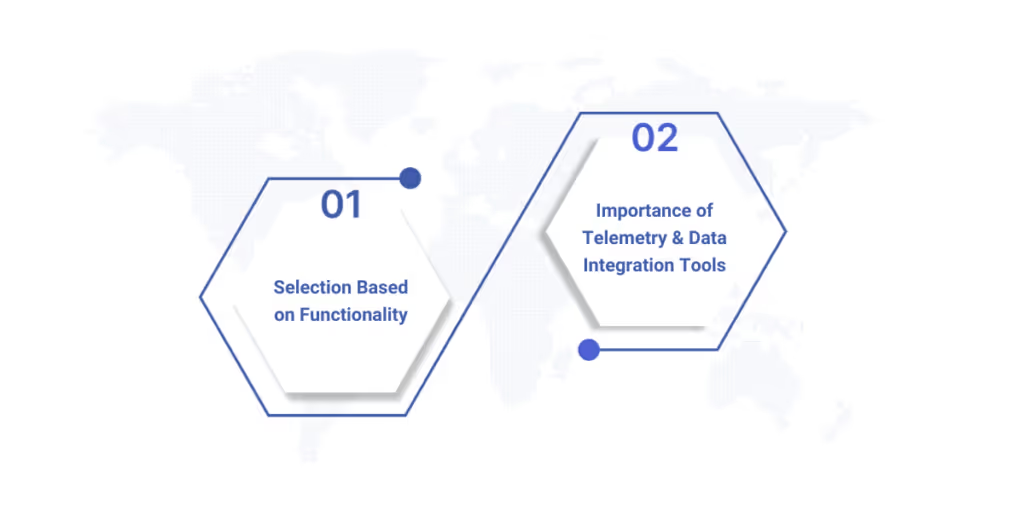

As public cloud service spending surged by 20.4% in 2024, organizations have become increasingly aware of the need for efficient monitoring and observability. These practices are essential for managing complex distributed systems and ensuring optimal application performance. While these two concepts are often used interchangeably, they serve distinct purposes.
Monitoring offers a high-level snapshot of system health, providing situational awareness. In contrast, observability goes deeper, helping you identify the root cause of issues and taking action to fix them before they have an impact on your organization.
This article will explore the key differences between monitoring and observability and explain how leveraging both can enhance your business outcomes.
Let’s break down their definitions and key concepts.
Monitoring is the process of gathering and evaluating data to determine a system’s health and performance. It provides real-time insights into system behavior, enabling businesses to detect issues before they escalate. For example, if a server's CPU usage spikes, monitoring tools can alert the team to the problem and enable a quick response. This proactive approach helps avoid downtime and ensures that systems are functioning optimally.
On the other hand, observability goes a step further. It involves tracking system health and understanding your system's internal workings through external outputs. Observability provides a detailed view of the system’s behavior and allows teams to answer critical questions: Why did a failure occur? What part of the system is causing the issue? For instance, while monitoring might alert you to a slow website, observability would help pinpoint whether it's due to database queries, server load, or network latency.
Now that we’ve defined both concepts, let’s explore the core distinctions between monitoring and observability.
The following table outlines the key concepts and distinctions between Monitoring and Observability, clarifying how both enhance IT operations.
ConceptMonitoring ObservabilityCore ConceptFocuses on predetermined metrics and alerts.Leverages aggregates like logs, metrics, and traces for deeper insights.Operational RoleReactive, dealing with known issues.Proactive, identifying unknown issues and root causes.Logs-Capture system events, helping to pinpoint issues (e.g., error messages).MetricsTrack performance (e.g., CPU usage, uptime).Track performance and quantify changes (e.g., response times, error rates).Traces-Track requests through systems to identify delays and failures.Use CaseProvides situational awareness of system health.Enables in-depth investigation of issues and their root causes.Integration in DevOps-Helps with capacity planning, resource allocation, and cost optimization.SynergyWorks well with observability for a comprehensive view.Complements monitoring by giving deeper insights and aiding troubleshooting.Roles in IT OperationsMonitoring is reactive, focusing on identifying known issues and enabling teams to respond quickly when problems arise.Observability is proactive, identifying 'unknown unknowns' by helping teams uncover new problems in complex systems, such as performance degradation or unidentified errors.
Building on the differences between monitoring and observability, the integration and synergy of both approaches can significantly enhance system performance and operational efficiency.
While monitoring and observability each have their specific roles, they work best when combined.
Monitoring focuses on tracking metrics and sending alerts when thresholds are met, helping teams quickly address operational issues as they arise. This provides immediate visibility into system performance and ensures that everything stays within expected parameters.
However, observability goes beyond just reacting to alerts. It allows teams to dive deep into the internal workings of the system, providing context through detailed logs, metrics, and traces. This deeper level of insight helps identify root causes, enabling teams to resolve issues more effectively before they escalate or affect the business.
In DevOps workflows, monitoring and observability complement each other to improve troubleshooting and optimization. Monitoring flags potential issues, and observability empowers teams to trace the source of problems, making fixes more efficient. Together, they support capacity planning and cost optimization by allowing businesses to better understand resource needs and scale their infrastructure without over-provisioning.
Despite the critical importance of monitoring and observability in modern IT operations, organizations face significant challenges in effectively implementing these practices. Understanding these problems is critical for realizing the benefits of observability while also guaranteeing system reliability.
While monitoring and observability are valuable for system management, they come with challenges that need to be addressed.
Monitoring systems may struggle with complex, distributed architectures and fail to detect multifaceted issues. They rely on predefined metrics and often provide isolated data, making it difficult to see the full picture, especially across multiple platforms.
Observability requires accurate and detailed telemetry data to provide meaningful insights. Without comprehensive data from all system components, observability tools can’t effectively diagnose problems, which poses challenges for organizations lacking the infrastructure to collect and analyze such data.
After discussing some of the difficulties, let’s look at the resources and methods that can be used to get over them.

Selecting the right tools for monitoring and observability is essential for managing system performance and providing a reliable user experience. Let’s examine how to choose and utilize these tools effectively.
These strategies help in tracking real-time performance and improve long-term system stability and efficiency.
Monitoring and observability aren’t optional; they optimize system performance. Monitoring alerts you to immediate issues, but observability empowers you with the insights needed to understand the “why” behind those issues. Both are critical for maintaining system reliability and ensuring a seamless user experience.
When integrated effectively, monitoring and observability improve issue resolution and proactively drive better decision-making. This combined approach supports smarter scaling, resource management, and cost optimization, enabling businesses to avoid potential challenges.
At WaferWire, we specialize in helping enterprises and mid-market companies harness the power of monitoring and observability. Our solutions ensure that you have the right tools to maintain system health, improve performance, and scale confidently.
Let’s collaborate to future-proof your infrastructure. Contact us and discover how our expertise can transform your IT operations.

